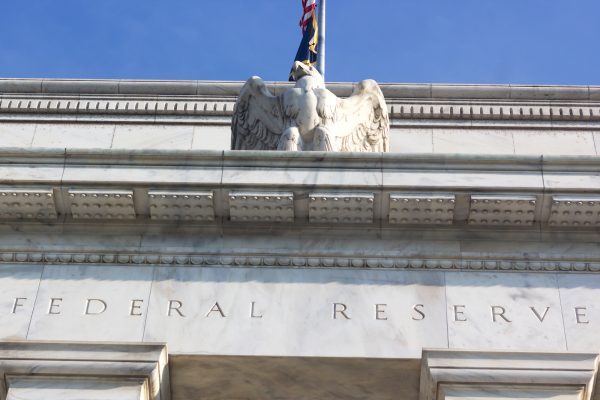When the U.S. Federal Reserve raises its benchmark interest rate, especially when it does so aggressively and when more hikes are expected as is presently the case, the dollar gains in value against global currencies. And countries running current account deficits or with large debt burdens will generally see their currencies fall faster.
Emerging market currencies often get hit hardest in this situation as investors shift out of riskier assets and into things like U.S. bonds to capture rising yields. But in this round of Fed tightening, something interesting is happening. Many currencies in Southeast Asia are holding up pretty well; they are depreciating but not at a panic-inducing rate that will kick off a massive capital flight or cause a balance of payments crisis.
Interest rates in ASEAN countries have been ticking up in response to the strengthening dollar, but a lot of central banks are moving in a measured way and don’t find themselves under the same intense pressure to defend their currencies as, say, the Bank of England or Bank of Japan. How can we make sense of this?
For one, some currency depreciation, especially in emerging markets, is not altogether a bad thing. A weakening baht is going to help Thailand do more of what it really wants to do right now which is export goods and services. As the baht weakens and the dollar strengthens, more people may decide now is a good time to take a vacation to Phuket. More people will buy goods manufactured in Thailand. That is what policymakers want.
The key, as in all things, is balance. Emerging market central banks don’t necessarily want to stop their currencies from depreciating, but to prevent them from weakening too much too quickly. That can induce panic and damage credibility, which will lead to bigger problems. The depreciation needs to be managed, and this is accomplished mainly through interventions in capital markets and through the central bank’s policy rate.
Emerging markets have quite a bit of hard-won experience with capital flight, currency volatility and the capricious whims of global investors. They generally accumulate large foreign exchange reserves precisely so they can backstop the currency during times of volatility like this. The central bank can also raise or lower interest rates. A higher rate will help buoy the currency by attracting more capital inflows, or reducing outflows. But raising rates can also cool economic growth and drive up borrowing costs.
Policymakers are thus presented with a tricky choice. If they do nothing and leave rates untouched, their currencies will continue to lose value against the dollar and they will have to burn through reserves to stabilize it. A lack of policy credibility here can also accelerate capital outflows and debase the currency, which is bad.
On the other hand, raising rates can squeeze the economy and 2023 growth forecasts for most of Southeast Asia have been pretty good. You don’t want to pump the brakes on that unless you have to. Moreover, if you happen to be a government, business or consumer with a lot of debt then rising interest rates will not be a welcome sight. Central banks in the region will have to carefully weigh these risks and try to balance them.
Malaysia and Indonesia have each hiked rates by 75 basis points. Beginning in May, Malaysia’s policy rate increased three times from 1.75 percent to 2.5 percent while Bank Indonesia waited all the way until August before bumping the rate from 3.5 percent to 3.75 percent. Last week it moved to 4.25 percent. These are pretty modest increases given what the Fed is doing, and are anchored by strong current account positions thanks to booming commodity exports. As global demand for palm oil and coal cool, however, central bankers in Malaysia and Indonesia may be faced with trickier policy choices next year if capital markets remain volatile.
Interest rate increases are not the only tool in play here. Central banks will also be tapping their foreign exchange reserves to slow the rate of depreciation. In Thailand, forex reserves stood at $225 billion in December 2021. By August 2022, they had fallen to $195 billion, likely because of interventions in capital markets to prop up the baht. Meanwhile, the benchmark interest rate increased by a very modest 25 basis points, from 0.5 percent to 0.75 percent. The baht has declined by about 20 percent against the dollar since its 2021 highs. This is all pretty manageable.
Of the major emerging market economies in the region, the Philippines has had to be the most aggressive, increasing the benchmark rate from a low of 2 percent in May to 4.25 percent in September. This reflects the country’s comparatively weaker position, with fewer forex reserves than Thailand, swelling public debt thanks to the pandemic, and a sizable current account deficit. The peso has moved about 20 percent lower against the dollar since 2021, and this is likely to pose an ongoing challenge to President Ferdinand Marcos Jr. in his first year on the job.
All ASEAN currencies are feeling pressure from a rising dollar. No surprise there, and we should expect continued volatility as well as more rate hikes in the months to come. But most currencies have nevertheless been holding up pretty well, as central bankers raise interest rates and tap forex reserves to control the depreciation, hopefully without squeezing economic growth too hard or shocking borrowers into insolvency. Crucially, they have so far maintained overall policy credibility, which is key. We need only glance over at England to see what happens when a central bank or government begins to lose credibility on this issue.


